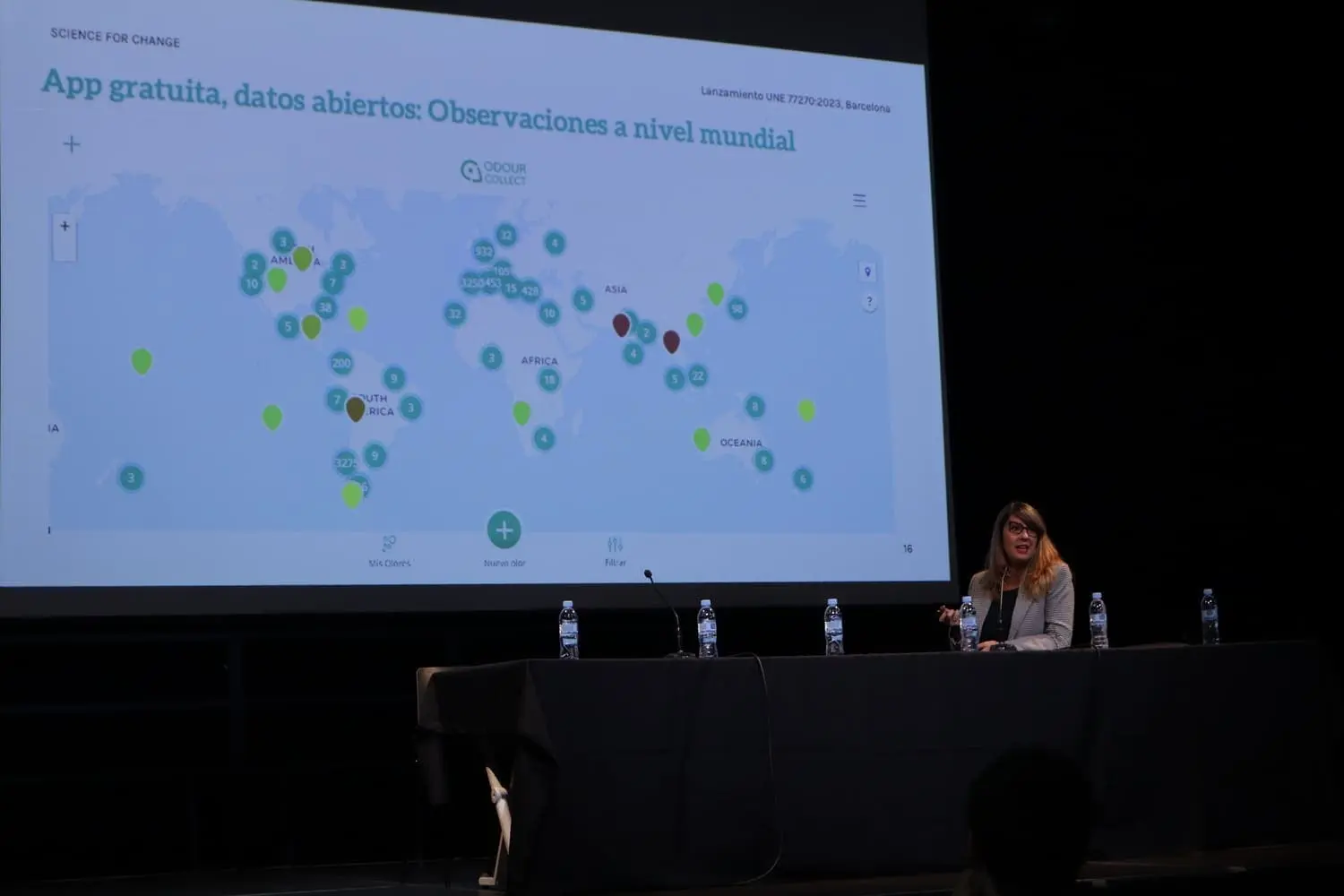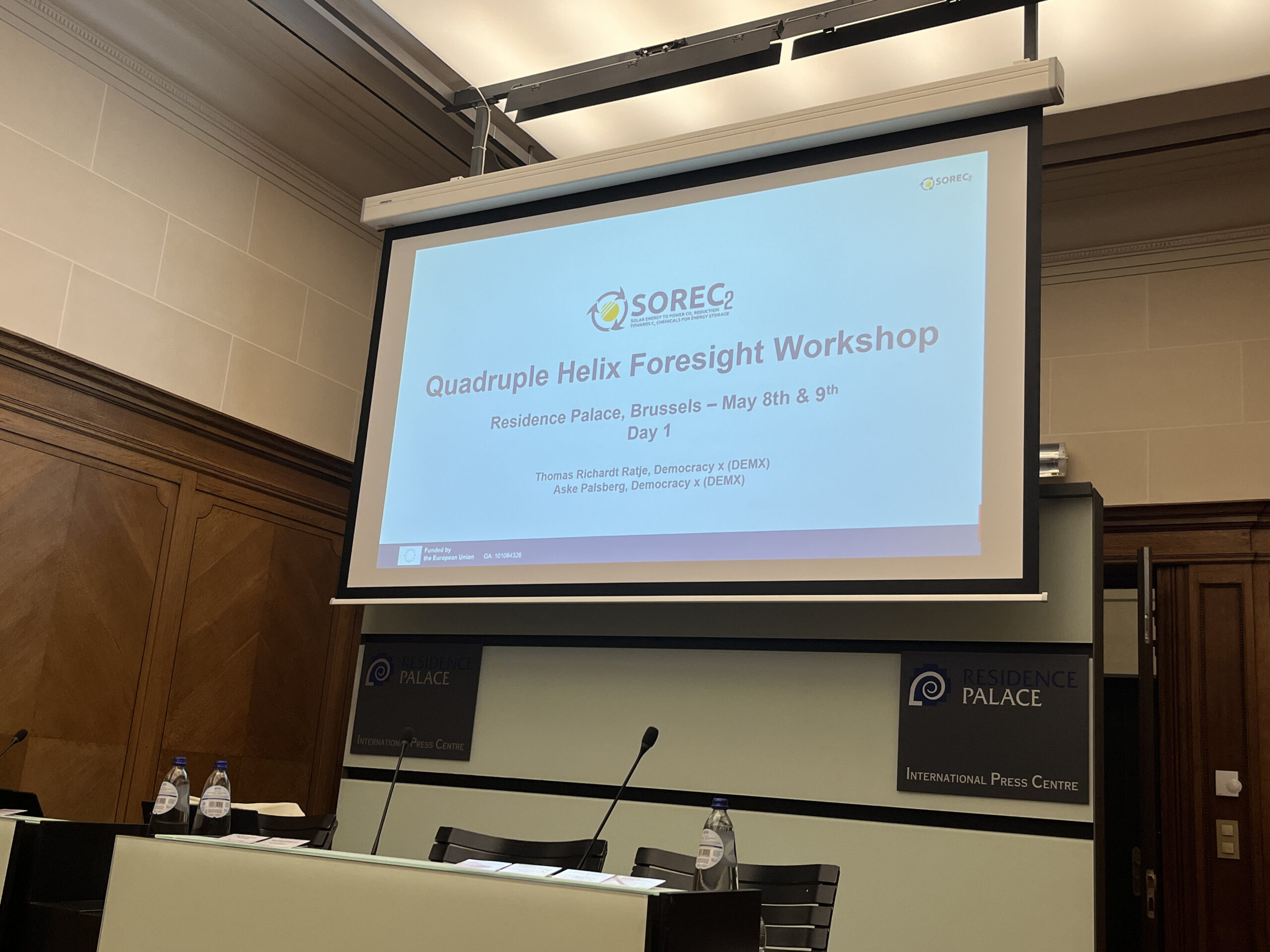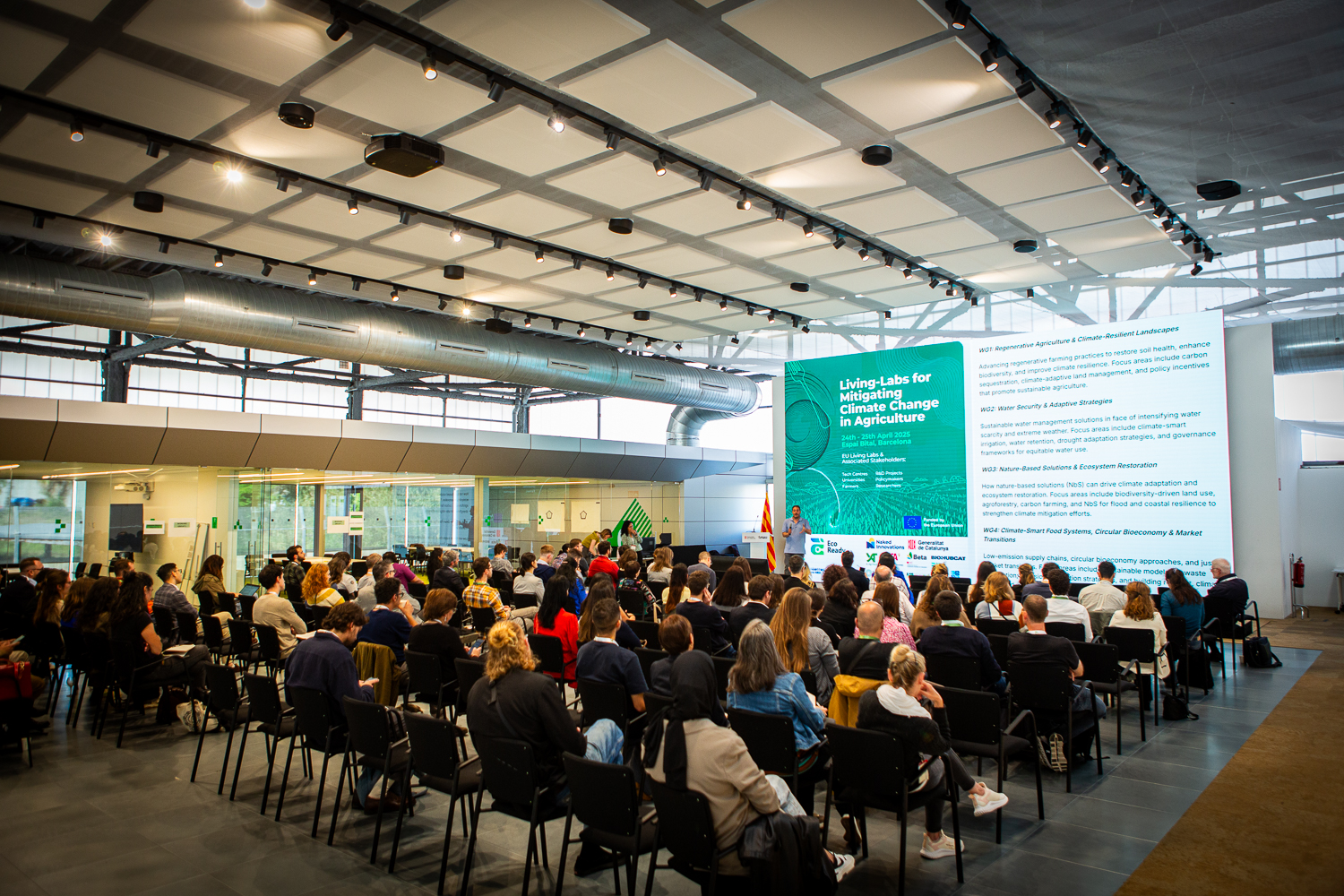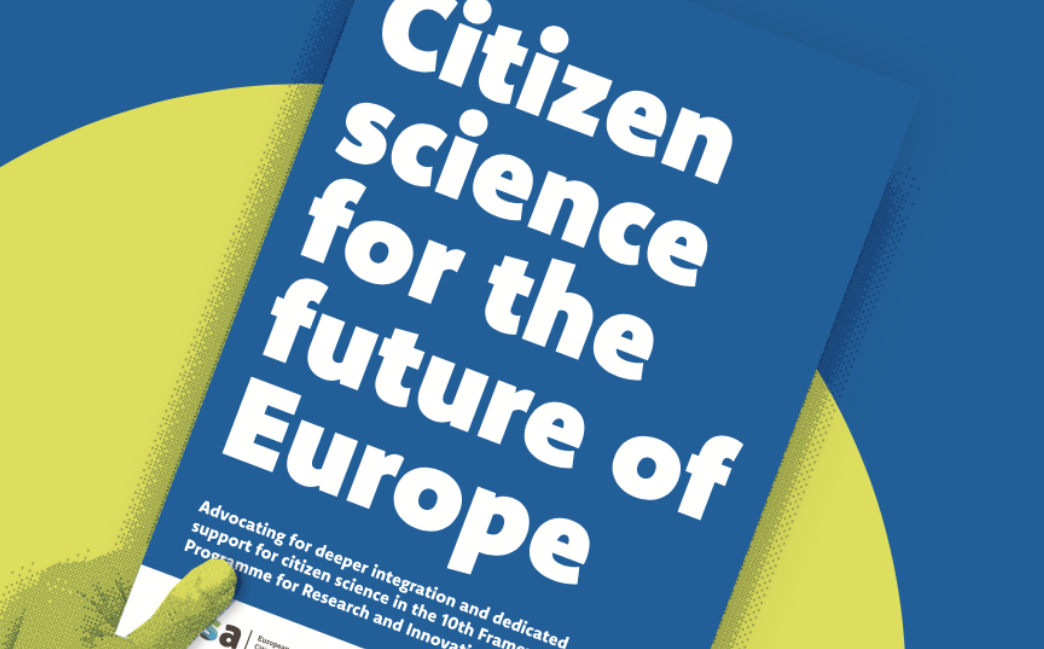
10 de November de 2023
Presentation of the first UNE technical standard that includes the public
The first UNE standard that defines the creation of collaborative maps for the assessment of odour nuisance through citizen science has become a reality. On the 6th of November Science For Change organized the launch event of the UNE 77270:2023 "Collaborative odour mapping through citizen science".
Science for Change has participated as an expert in the development of this standard during 4 years of collaborative work, together with 15 experts from different sectors. Thanks to this UNE standard, citizen science will be officially adopted to monitor odour impact by authorities or emitting activities.
The initiative stems from the reality that odours are a growing concern in society, representing the second most common cause of environmental complaints for citizens after noise pollution. In 2019, the International Environmental Association of Odour Managers (AMIGO) was the driving force behind the development of this technical standard.
There are several methodologies to assess odour impact, such as dynamic olfactometry, together with the use of dispersion modelling, or field panellist studies, the only two methodologies standardized by the Spanish Association for Standardization (UNE) so far. However, none of these techniques is able to relate the odour impact to the annoyance caused to citizens in real time and space from the point of view of the people who receive the odour.
For this reason, the development of this first UNE standard to monitor odour annoyance in real time, focusing on the importance of citizen science, has been of vital importance.

To close the event, Gloria Sànchez from the AMB, Isabel de Lucas from Nasapp, Ivette Cucurell from the Hostalets de Pierola City Council, Gorka Segura as a citizen representative and Núria Aguasca from PreZero participated in the round table to discuss success stories and answer questions from the public about what steps to follow to remedy odour pollution.
In this standard you can smell the footprint of all parties involved in balance, making way for the smell
Vania Zorich
AMIGO
To close the event, Rosa Arias highlighted the importance of implementing the standard and mentioned that the next step is to set emission limits. The first step we already have, which is this new methodology to measure, but we need to go one step further and set new immission limits in future odour regulations to protect citizens, taking into account their own perception in the impact assessment.



Science For Change and the citizen science methodology
Science for Change, with its extensive experience in citizen science and odour pollution, has been one of the promoters of this committee of experts. Rosa Arias, CEO of Science For Change, is a chemical engineer and an expert in odour pollution and citizen science, and was the coordinator of D-NOSES, a citizen science project addressing odour pollution. During the project, in 2018, the methodology reflected in the new UNE standard was already proposed.
D-NOSES succeeded in involving public administrations, industries, research institutions and citizens in participatory sessions aimed at co-designing solutions to reduce the impact of odour pollution. Thanks to this work, a new methodology was developed to obtain real-time and open data on the real perception of odour in affected communities using citizen science.
D-NOSES had two clear objectives: to validate the methodology and to influence public agendas at all levels. Through OdourCollect we were able to validate this citizen science methodology through 10 case studies on 3 continents, and I am proud to see the collaborative odour map we have created
Rosa Arias
CEO of SFC and Creator of OdourCollect



The project developed its intervention through the OdourCollect app, which allows collecting odour observations in real time, as well as to describe the type of odour perceived, its intensity and hedonic tone (if it is pleasant or unpleasant), in a geolocalised way and anywhere in the world.
OdourCollect is currently collaborating with the community, using its citizen science methodology to carry out projects that generate scientific data in real time, in compliance with the UNE 77270:2023 standard. OdourCollect works with open data, so the more than 14,100 odour records collected by more than 2,700 people in the 5 continents are available for consultation by accessing the website or from the mobile apps themselves.
Press:
- Storydata: https://www.storydata.es/blog/2023/11/08/una-nova-norma-une-inclou-a-la-ciutadania-en-la-monitoritzacio-de-la-contaminacio-per-olor/
- Línia Xarxa: https://liniaxarxa.cat/linialh/noticies/el-bon-olfacte-de-la-veina-rosa-arias-per-combatre-la-pudor/
- L’H Televisió: https://lhdigital.cat/general/entrevista-de-linformatiu-03-11-2023/
- Crónica Global: https://cronicaglobal.elespanol.com/vida/20230625/odourcollect-catalana-lucha-contra-malos-olores-mundo/773672675_0.html
Entradas anteriores

Brussels Workshop Gathers Experts to Shape the Future of Photo-Electrochemical Cells

SFC Showcases Citizen Science Solutions for Climate-Resilient Agriculture at EU Living Labs Conference

Position Paper Launch: Citizen Science for the Future of Europe – advocating for deeper integration and dedicated support for citizen science in the 10th Framework Programme for Research and Innovation (FP10)